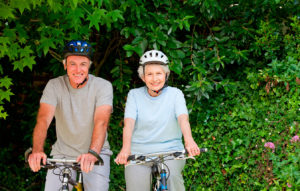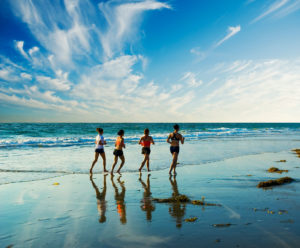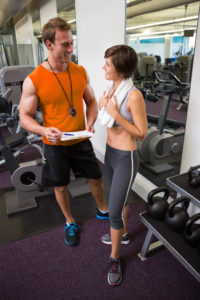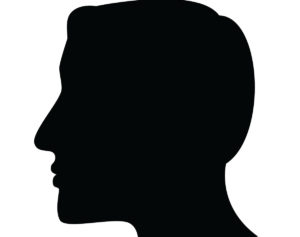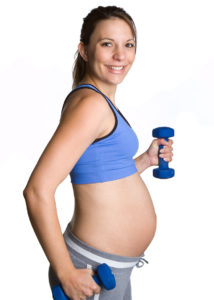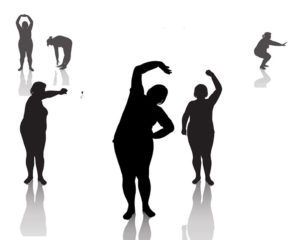Anatomy/Kinesiology
Middle-Aged Men Can Improve Bone Health
It’s becoming more widely known that women are not alone in suffering from osteopenia. Men are also at risk
for this age-related disease. A recent report highlights two ways middle-aged men can defend against bone loss.
Cut Postmenopausal Breast Cancer Risk
How much exercise is needed to reduce body fat—a known breast cancer risk factor—in postmenopausal women? That’s the question researchers explored in a study published in JAMA Oncology (2015; doi:10.1001/jamaon col.2015.2239).
Obesity Ups Cancer Risk in Black Men
According to researchers from the Fred Hutchinson Cancer Research Center and the University of Washington, African-American men have the highest rates of prostate cancer (both development and mortality) in the United States. Those same researchers have determined that obesity among this population makes the problem much worse.
Can Barefoot Running Prevent Injury?
There’s plenty of discussion about whether barefoot running helps runners or harms them. A new report suggests that females may benefit from employing this controversial protocol.
Are Pilates and Yoga Right for Clients With Low Bone Density?
After working with an older adult (aged 82–92) for 10 years, I was troubled to discover that she had begun having difficulty getting out of the waiting room chair before embarking on our weekly Pilates session. What was I missing? She had faithfully completed Reformer Footwork, Eve’s Lunge and Side Splits, as well as Standing Leg Pumps on the Wunda chair, each week. Why was she continuing to lose leg strength?
Is There a Right or Wrong Way to Squat?
“Hey, keep your knees behind your toes when you squat!” “Deep squats are bad
for the knees!” “My doctor told me I should not squat anymore.” “You
should never let the knees cave in or out during a squat.” Chances are
you’ve heard this advice and maybe even given it to your clients. I know
that for many years in my career I’ve been guilty of making similar
recommendations to clients from all walks of life. The problem is, where
Understanding the Language of Movement
Coaches and trainers are really educators specializing in human movement, so it’s central to our success—and that of our clients—to build a fluid understanding of how humans learn to move and how we can influence their learning. ?
Yoga for Neck and Shoulder Pain
In our high-stress, hurried world—filled with financial pressures, information overload, “terror alerts” and sleeplessness—many people feel the weight of the world on their shoulders. Add to this emotional tension the physical stress of sedentary lifestyles with long hours spent hunched over computers and, all too often, the result is a serious pain in the neck.
Chronic Pain in Fitness Professionals
An Objective Eye
It can be difficult to take a step back and be objective when it comes to your own health. Katy Bowman, MS, director of the Restorative Exercise Institute in Ventura, California, and author
of Move Your DNA: Restore Your Health Through Natural Movement (Propriometrics Press 2014), suggests you write down
the following:
Profiles of Pain and Perseverance
In February 2006, Danny Strong was on top of the world. After years of working as a gym manager, he had opened his own personal training gym, making his dream a reality. The husband and father was also eager to welcome a second child into the family. A month after receiving the keys to his new facility, he took his family on a trip to visit his godmother. While on the road, Strong lost control of his vehicle and was hit by a tractor-trailer traveling at full speed. His pregnant wife, Sandra Urbano Strong, was killed instantly.
Bench Angle and Muscle Activation
Have you ever wondered about differences in muscle activation when the bench press is performed at a variety of angles? A report printed in the European Journal of Sport Science (2015; doi:10.1080/17461391.2015.1022605) may satisfy your curiosity.
The Science of Suspension Exercise
Suspension exercise combines body weight and anchored, seatbelt-like straps to provide an alternative to free weights and machines. The question on a lot of trainers’s minds is whether these strap-based training systems work as well as more traditional resistance training tools. Though research into this question has been somewhat sparse, studies are starting to paint a picture of effective ways to integrate suspension exercise into a workout program.
Major Risk Factors for Coronary Artery Disease
These are some of the factors that can increase the risk of developing atherosclerosis and coronary artery disease:
Pregnant Instructor FAQs
Many years ago, while I was pregnant with my second child, something happened that I hope no other group fitness instructor goes through. As I was driving to teach class,…
How to Be an Empathetic Personal Trainer
New beginnings. When Patty Shoaf first met Barbara 19 years ago,
she realized quickly that this would be a client like no other. “I
arrived for a consult at her house and a classy, high-heeled,
67-year-old woman wearing a skirt walked in,” Shoaf recalls.
Low Intensity vs. High Intensity: Which Is Best for Obese Adults?
The debate continues regarding the most effective exercise measures for reducing abdominal obesity and improving glucose measures.
Older Runners: Beware of Switching to Barefoot
Do you work with anyone who is interested in running barefoot or trading traditional running shoes for minimalist footwear? According
to research presented at the American Academy of Orthopaedic Surgeons 2015 Annual Meeting, some runners over 30 who transition to barefoot have difficulty adapting to the potentially less injury-prone forefoot strike pattern.
Reciprocal Superset Training Burns More Calories
Kelleher, A.R., et al. 2010. The metabolic costs of reciprocal supersets vs. traditional resistance exercise in young recreationally active adults. The Journal of Strength and Conditioning Research, 24 (4), 1043–51.
Five Benefits of Eccentric Exercise
Not everyone likes to focus on eccentric contractions, but this style of training deserves more attention because it may be a “secret weapon” for creating healthier joints and a long, lean body. Research reveals the perks for newcomers and well-trained athletes.
Self Myofascial Release for Seniors
Did you know it’s important to take care of the fascia—or connective tissue—in your body? The health of connective tissue is a serious concern for older people, as movement restrictions can make it hard for them to perform simple activities of daily living. The condition of our connective tissue depends on two factors—how old we are and what we have done in our lives to keep our tissue healthy, hydrated and flexible.

